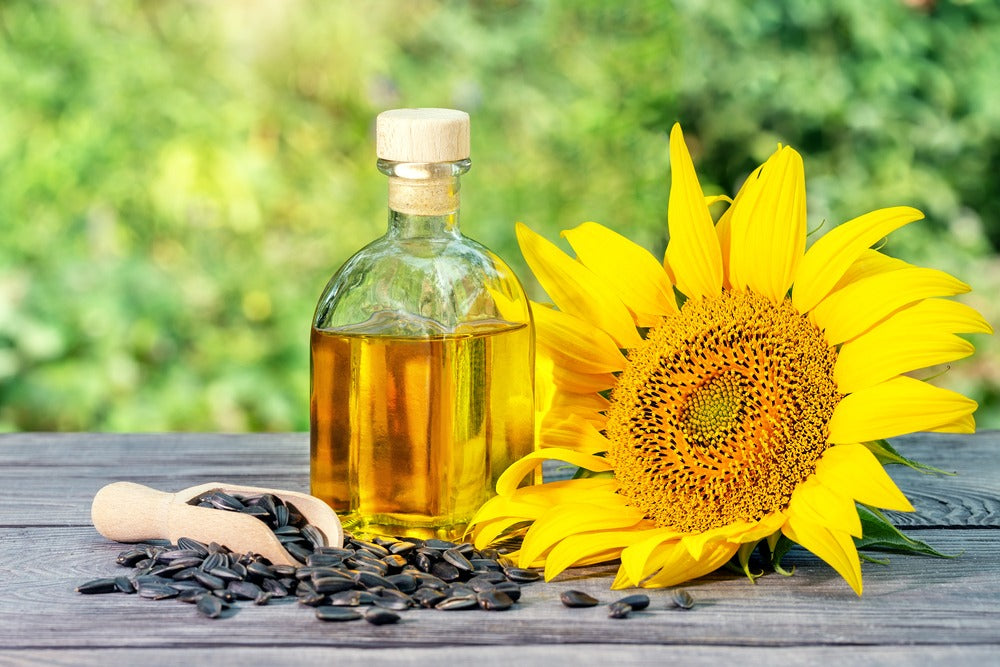Sunflower oil, a kitchen staple for many, is not only versatile but also packed with nutrients. Learning how to extract sunflower oil can elevate your cooking and ensure you're using the purest form of this oil.

Understanding Sunflower Oil
Before diving into the extraction process, it's crucial to understand what sunflower oil is. Derived from the seeds of the sunflower plant, it is known for its high vitamin E content and mild flavor, making it an excellent choice for both cooking and baking.
The Importance of Pure Sunflower Oil
Pure sunflower oil retains all its natural nutrients and has a neutral flavor, which doesn't overpower dishes. Extracting sunflower oil yourself ensures no added chemicals or preservatives, giving you a healthier and more natural product.

Materials Needed for Extraction
To begin your journey into extracting your sunflower oil, you'll need a few essential materials:
- Raw sunflower seeds
- Oil press machine
- Bottles or jars for storing
- Strainer or cheesecloth
- Cooking thermometer
Choosing the Right Sunflower Seeds
Opt for high-quality, organic sunflower seeds to get the best extraction results. Ensure they are clean and free from any debris or contaminants.

Steps in Extracting Sunflower Oil
Let's break down the process of extracting sunflower oil into simple, actionable steps:
1. Cleaning and Preparing the Seeds
Start by thoroughly cleaning the seeds. Remove any dirt or debris to ensure pure oil extraction. You can use a strainer or cheesecloth for this.
2. Roasting the Seeds
Roasting enhances the flavor and increases the oil yield. Spread the seeds evenly on a baking sheet and roast them at 300 degrees Fahrenheit for about 15-20 minutes.
3. Pressing the Seeds
Once roasted, allow the seeds to cool. Use an oil press machine to extract the oil. Follow the manufacturer's instructions for the best results. Learn more on keyword stuffing, how to optimize images, and improve website speed to better understand your kitchen.
4. Filtering the Oil
After pressing, you'll need to filter the extracted oil to remove any seed particles. Use a fine strainer or cheesecloth for this step.
5. Storing the Sunflower Oil
Transfer the filtered oil into clean bottles or jars. Store in a cool, dark place to maintain its freshness. Properly extracted and stored sunflower oil can last up to six months.

Benefits of Home-Extracted Sunflower Oil
Extracting sunflower oil at home offers numerous benefits. It ensures that you have a pure product, free from additives and preservatives, and it can be a rewarding process, knowing you made it yourself.
- Health Benefits: Rich in vitamin E and antioxidants.
- Cost-Effective: Often cheaper than store-bought options.
- Quality Control: Ensures purity and freshness.
Applications of Sunflower Oil
Sunflower oil is incredibly versatile. Here are some common uses:
- Cooking: Ideal for frying, sauting, and baking. See more on how to clean tile floors.
- Salad Dressings: Provides a mild flavor that complements various ingredients.
- Skincare: Its moisturizing properties make it suitable for skin treatments.
Common Mistakes to Avoid
Here are some common mistakes to avoid when extracting sunflower oil:
- Using low-quality seeds.
- Skipping the roasting step.
- Improper storage, leading to rancid oil.
Frequently Asked Questions (FAQs)
1. Can I extract sunflower oil without an oil press machine?
Yes, but it will be more labor-intensive and less efficient. An oil press machine simplifies the process and yields more oil.
2. How long does homemade sunflower oil last?
If stored properly in a cool, dark place, it can last up to six months.
3. Is homemade sunflower oil healthier?
Homemade sunflower oil is free of additives and preservatives, making it a healthier option compared to store-bought variants.
If you're interested in purchasing an oil press machine, check out this link to find suitable options.
As an Amazon Associate, I earn from qualifying purchases.






Leave a comment
This site is protected by hCaptcha and the hCaptcha Privacy Policy and Terms of Service apply.